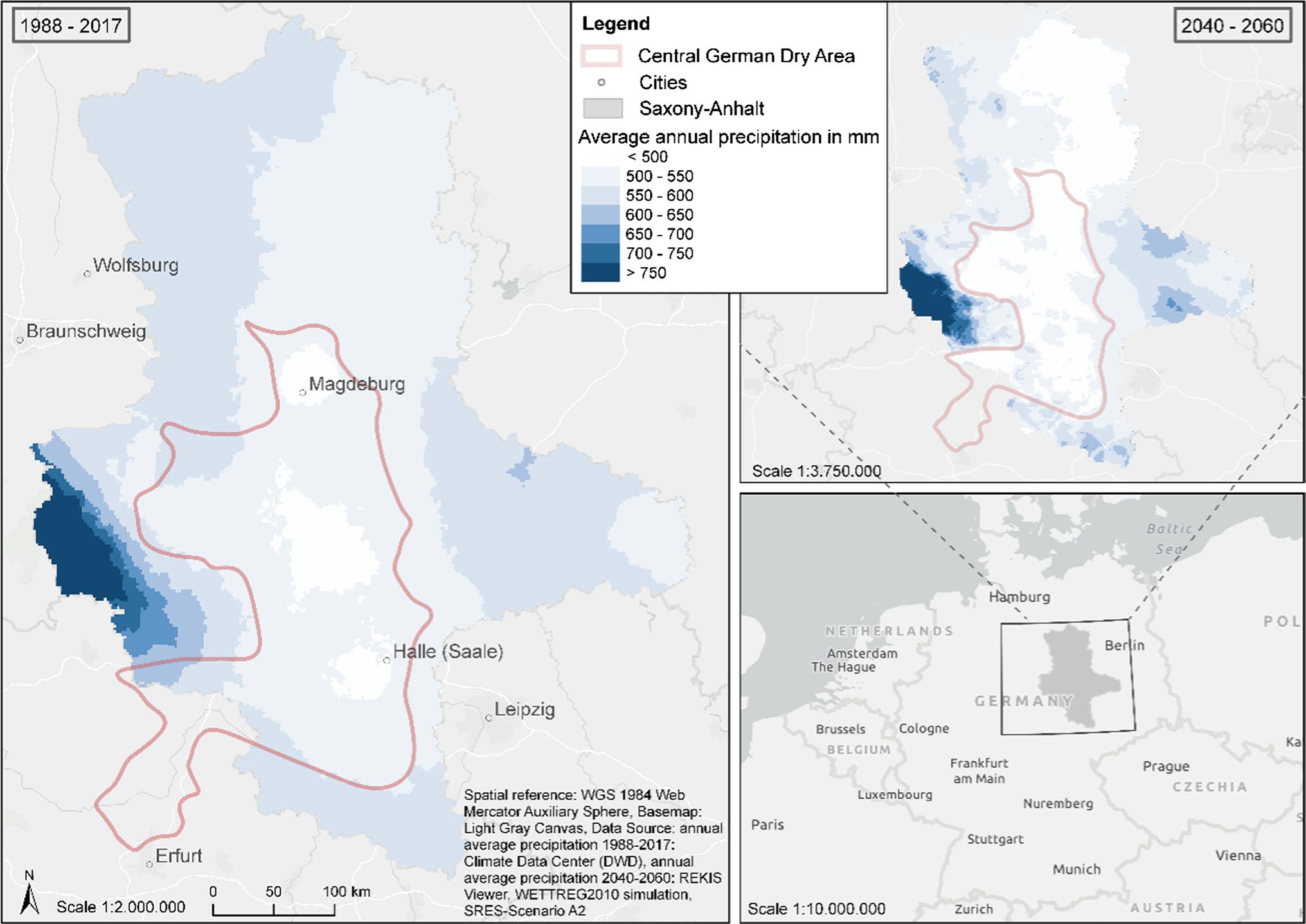In the past, the climate in Saxony-Anhalt, which is distinguished by dry summers and mild winters, was characterized by an average annual temperature of approx. 8.6 °C and annual mean precipitation of 562 mm (Döring 2004; Fabig 2004; MULE 2017). Some parts of the country record a negative annual average climatic water balance. Accordingly, the amount of available water is not sufficient for the entire growth phase of the plants. Changes in climatic conditions have already been recorded in the past (Bernhofer et al. 2008; Kreienkamp et al. 2013; LAU 2013). Thus, areas already affected by drought have become increasingly dry in recent decades, while more humid regions, such as the Harz Mountains, are recording increases in precipitation (BLE 2017). In general, a redistribution of precipitation from summer to winter was observed over the same period (Fabig 2004). The annual mean temperature in Saxony-Anhalt has already risen by 0.5-1.5 °C over large areas, with the strongest warming in the winter months (Kreienkamp et al. 2013).
Figure 1 shows the long-term annual average precipitation for 1988-2017 and predicted precipitation for 2040-2060. According to the simulation, the low-precipitation area will extend beyond the borders of the Central German dry region in the near future.

The agricultural sector in Saxony-Anhalt is of high economic importance. About 60% of the area is used for agriculture. With regard to climate change, the sector is classified as highly vulnerable (Kropp et al. 2013; Zebisch et al. 2005). Due to the increase in snow-free winters and the subsequent increase in early summer dryness, high water deficits are to be expected in the yield-forming growth phase (Böttcher et al. 2015; Schmidt et al. 2010).
The area of interest is the Central German dry region, mainly located at the Federal State of Saxony-Anhalt and particularly vulnerable to climate change (Kropp et al. 2013; Zebisch et al. 2005). The rain shadow of the Harz mountains causes an average precipitation of less than 500 mm per year in the Central German Drylands. In the eastern Harz foreland, arid conditions can be observed in very dry years (230 to 300 mm annual precipitation). The climate is affected by the continental influence, which is particularly noticeable with a maximum precipitation in the summer months. Highly erosive precipitation can accumulate at this time. In contrast, there is a minimal precipitation in the winter months. Large-scale weather patterns in the area cause very warm summers and moderate winters (Döring et al. 1995; Hendl and Endlicher 2003; Wendling 2002).